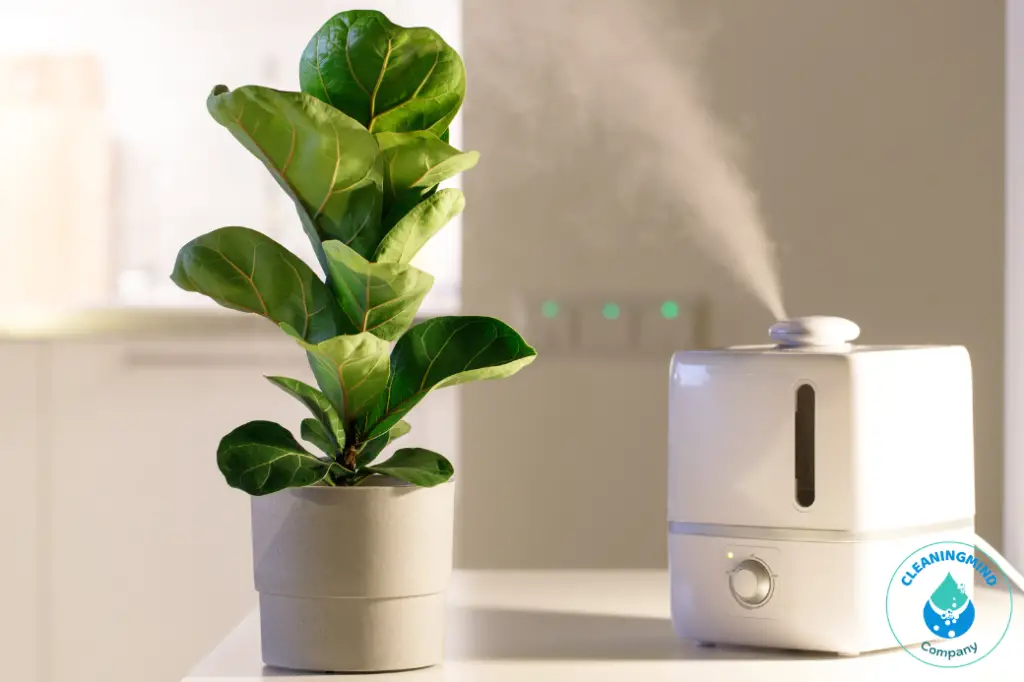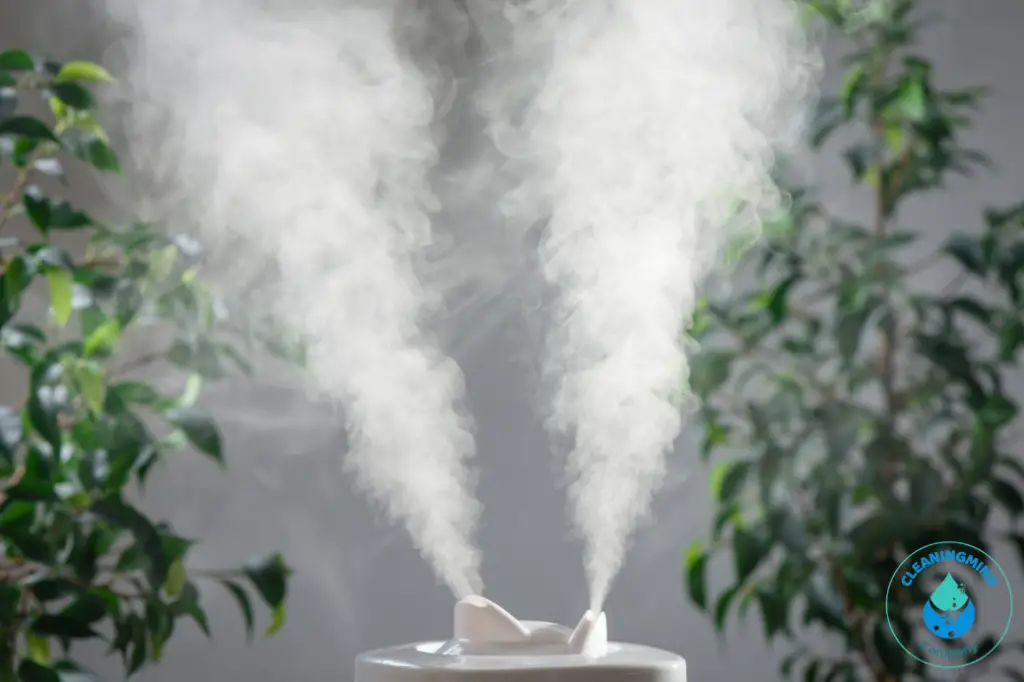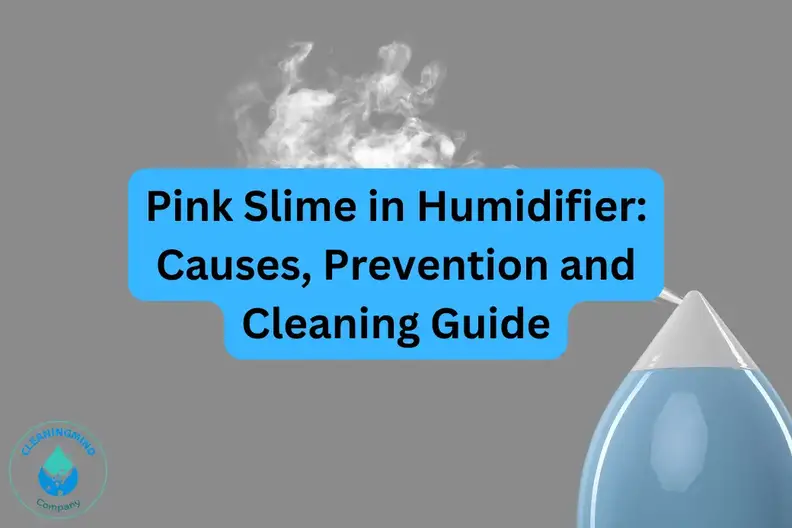Pink Slime in Humidifier: Causes, Prevention and Cleaning Guide
Pink mold is very common in places that are wet and dark, so it is wet and dark in the humidifier, and therefore there is a pretty good chance for a pink slime [mold] to be developed inside a humidifier.
So once you see this pink slime inside the humidifier, especially on its inner walls, there is nothing to worry about. It is fully cleanable using a general cleaning solution and a brush.
In this article, we discuss the creation of pink slime inside the humidifiers, how to clean those slimes, and how to prevent those slimes. So stick until the end, and remember that Cleaning and organizing is a practice, not a project.
Table of Contents
- What causes pink slime in humidifier?
- How to prevent pink slime in humidifier?
- How to clean the pink slime inside a humidifier?
- Are there any anti mold humidifiers?
- Is the mold in the humidifier harmful?
- What is the brown stuff in my humidifier?
- How to get rid of the white residue from the humidifier?
- What are the uses of an air humidifier?

What causes pink slime in humidifier?
We’ve discussed a lot about household molds and preventing them for a cleaner house. So, as you know, molds can have many colors, and the most common colors are black and green.


But, the pink mold [slime] is quite different because the pink mold is grown in places that are wet and dark.

So, as discussed, pink mold in the humidifier is very common and that is something which is very hard to control because you cannot provide any light inside the humidifier. But are you done? No. What you can still do is regular cleaning of the humidifier at least twice a month.
How to prevent pink slime in humidifier?
Your humidifier works by storing water in a tank (which may or may not be treated). When activated, the humidifier draws water from the tank and sprays it into the air as water vapor.

Because humidifiers are routinely used overnight to aid sleep, it is not surprising that the dark, moist interiors of the tank and spout become breeding grounds for germs and mold.
As there is always water inside it touching walls, there is no way of preventing the slime creation unless you clean it regularly according to the user manual.
How to clean the pink slime inside a humidifier?
Here is how to clean a humidifier. These are the general steps, and they can be different depending on the manufacturer and the design.

- Unplug your humidifier, remove the water bowl, and dump any residual water.
- Clean the inside of the water bowl with a light soap and a clean sponge.
- Replace after fully drying.
- Inspect the vapor spout to ensure that no mold has grown.
- To clean the vapor spout, use a gentle cleanser and a clean wipe or paper towel.
Proper humidifier maintenance and cleaning may be enough to keep pink mold at bay and keep you and your family safe. You can also help prevent pink mold by not using tap water and instead using distilled water in your humidifier.

Are there any anti mold humidifiers?
Many manufacturers say that their product is anti mold and you will not need much cleaning and attention. But as per my experience, mold is something which cannot be prevented.

The pink slime is developing when there is little to no light, but when you keep the inside of the humidifier lit, the pink slime will go away and a black, brown, or green mold will start to grow.
The other thing is that the tap water you are using is slightly contaminated [it contains microorganisms], so it is common for it to produce mold when they grow in it.
Is the mold in the humidifier harmful?
It can be, but in most cases, it is not harmful to you. But it will definitely reduce the lifetime of the humidifier.
Microorganisms and the chemicals they produce can be harmful at any time, so it is very important to keep the humidifiers as clean as possible, especially when there are children in your home.
Mold can form inside a humidifier system, resulting in extremely harmful air quality. Long-term mold exposure has been related to a variety of health problems, particularly in persons with mold allergies, people with compromised immune systems, and children.

What is the brown stuff in my humidifier?
The brown material in your humidifier is a mix of air and dirt, pollen, and mold that have died and gone to the bottom of the water and returned to the top. Therefore, be healthy and replace the water in your humidifier every day to get rid of this problem.
Brown sludge or particles in a humidifier are caused by:
- minerals:
- mold;
- dirt.
That accumulate inside the device and cause it to spew brown particles into the air. Mold, such as:

- Taeoniella;
- Ulocladium;
- Cladosporium.
Mold grows in humidifiers that are not cleaned on a regular basis. To remove the brown buildup, vinegar, baking soda, hydrogen peroxide, and bleach can be used.
Is mineral buildup in the humidifier bad?
Your humidifier will eventually build significant amounts of limescale, which will be thick and difficult to remove.
Aside from that, limescale can impair the life of your humidifier and be disseminated in the air. Limescale in the air irritates the lungs, so it’s critical to get rid of it before it becomes a significant issue.

How do I get rid of mineral buildup in my humidifier?
If your humidifier is currently showing signs of mineral buildup, you can dissolve calcium and lime deposits with undiluted white vinegar.
After disassembling your humidifier, use a toothbrush or other small scouring brush to scrub away the mineral deposits.
Minerals such as calcium, magnesium, and sodium are commonly found in ground water supplies. These minerals are good for your health, but they are bad for the efficiency of some of your home appliances.
The rate at which minerals collect is determined by the frequency with which you use your humidifier and the amount of minerals in the water.
While using distilled or filtered water significantly reduces mineral buildup, it does little to prevent mold, mildew, bacteria, and fungi from growing in your humidifier. If you use your humidifier frequently, clean it with an anti-microbial spray cleaner once a week.

How to get rid of the white residue from the humidifier?
It’s a byproduct of the minerals in the water you drink. However, this is dependent on the source of the freshwater. If you’re filling the humidifier with tap water and it’s spreading white dust, you probably reside in a hard water area.

- Fill your humidifier tank with distilled water rather than tap water. This will result in fewer minerals being distributed and accumulating on surfaces.
- Install a demineralization cartridge in your humidifier to capture minerals before the water vaporizes and spreads throughout your home.
- Change to a warm- or cool-mist humidifier system, which works differently from the various types of humidifiers we discussed previously.
- Set up a water softening system. If hard water is the source of mineral-rich water in your humidifier, a water softener system can solve the problem while also benefiting your plumbing and appliances like the washing machine and dishwasher.
Recommended: Making the right choice: hot or cold water for humidifier?
Is white dust from humidifiers harmful to plants?
As this white dust is minerals, then it can be somewhat harmful for the plants. So it will be better if you can fix the humidifier to stop producing that white dust.


What are the uses of an air humidifier?
By adding moisture to the air, humidifiers can help you avoid getting sick. Humidifiers, in particular, have been shown in studies to help protect against the flu. Dry air draws moisture from the skin, making it unpleasant and irritating.
A dry, ineffective cough might be caused by dry air. Increasing the humidity in the air helps get more moisture into the airways, making coughing more productive. A productive cough expels mucus that has been stuck or sticky.
The moisture from a humidifier can be beneficial throughout the house. Houseplants that prefer dampness may become more vibrant, and wood floors or furniture may last longer. Humidity can also aid in the prevention of wallpaper crackling and static charge buildup.

Read also our guide: Moldy Brita Filter: How Can I Clean It?

Hi, I’m Anna Jeffery, an experienced author and cleaning expert. I strive to share my knowledge with everyone by writing useful guides and tips to keep their living and working spaces clean and healthy. I believe everyone deserves to live in a clean and organized environment, and I take pride in knowing that my articles are helping people achieve that goal. Stay tuned for practical and useful cleaning tips!










